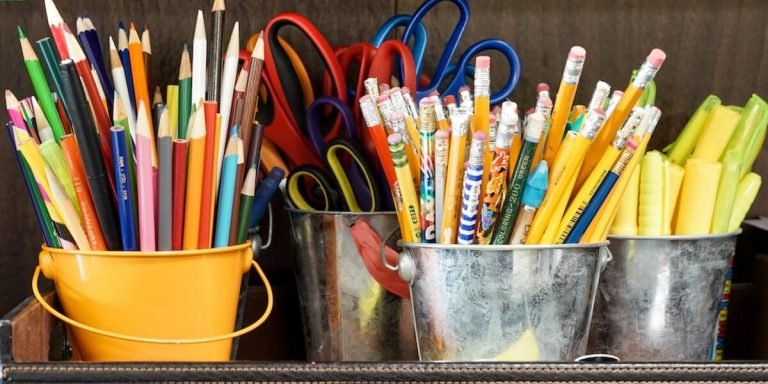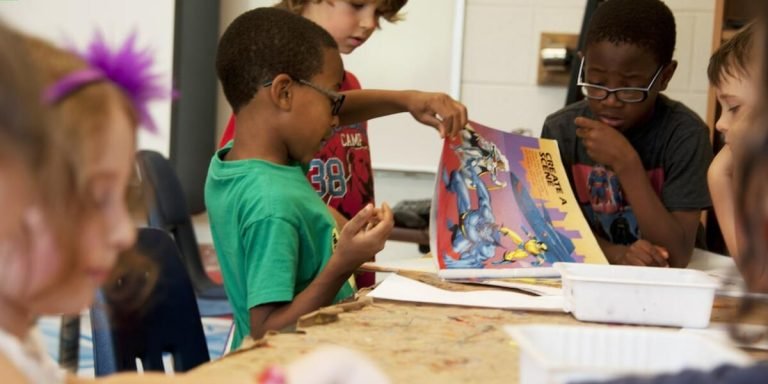Comprehension Strategies: Essential Approaches for Enhancing Children’s Reading Abilities
Developing strong reading skills in children is a crucial part of their early education, and an essential component to consider are comprehension strategies. Effective comprehension strategies can be the key to unlocking your child’s full academic potential. These techniques not only improve understanding but also cultivate critical thinking abilities that give them an edge over their peers.
The emphasis on these strategies in elementary school education is rapidly gaining momentum as educators across the globe recognise its importance. In this blog post, we will explore various methods that parents and teachers alike can employ to enhance a child’s capacity for better text understanding and information retention from what they read.
Did you know?
An interesting study by the National Literacy Trust, UK reveals that children who enjoy reading are five times more likely to read above their expected level compared to those kids who don’t.
Understanding the Basics of Comprehension Strategies in Elementary Education
Comprehension strategies serve as the building blocks in enhancing children’s understanding and retention of information. Educators across different elementary schools have employed these techniques to promote higher thinking abilities among students, significantly enriching their overall learning experience.
these cognitive tactics are aimed at instilling effective problem-solving skills among learners so they can independently tackle complex texts.
Furthermore, an integral part of employing comprehension strategies involves adapting them according to individual student needs; this highlights the diverse nature of today’s classrooms. The ultimate goal is not just limited to improving literacy rates but also nurturing lifelong readers who derive joy from acquiring knowledge through exploration while making sense of written language on their own terms.
Key Components of Effective Reading Comprehension
In elementary education, understanding the basics of comprehension strategies is vital. The development of these skills constitutes a substantial part in a child’s learning journey. Thus focusing on the can act as cornerstones in your young one’s educational foundation.
The first key component to note is Active Reading. This involves encouraging children to interact with text actively – perhaps underlining parts they find important or challenging, making side notes, and summarizing what they have read.
Secondly, there’s Vocabulary Instruction – having an extensive vocabulary not only aids reading but also helps comprehend complex ideas better. Incorporating games that improve their word bank can prove useful for this aspect.
Next comes Questioning Skills which are pivotal because asking themselves questions while reading enhances engagement levels tremendously and boosts overall comprehension ability too!
Textual Analysis forms another essential component where kids decipher meanings from words used contextually; noticing repetition patterns often leads them closer towards the story’s main theme or message intended by its author.
The Role of Vocabulary Development in Understanding Texts
Comprehension strategies revolve around three pivotal elements: vocabulary development, fluency, and text understanding. Among these pillars of efficient comprehension in elementary education lies the crucial role played by vocabulary development for young learners.
Observe carefully how your child engages with unfamiliar terms during reading sessions. This observation would give you insight into their current adeptness at handling new vocabulary. What do they do when faced with unknown words or phrases?
Do they attempt dictionary use for clarity or search out context clues within adjacent sentences?
A 2023 report from Johns Hopkins University highlighted that ongoing improvements in children’s understanding of texts correlate directly with consistent growth in domain-specific vocabularies across various disciplines like science and history.
Our task then becomes clear – create more opportunities for kids to expand their lexical repository organically through diverse experiences such as subject-wise readings beyond course books, peer interaction sessions promoting language exchanges etc., thereby bolstering their overall comprehension capabilities.
Moreover, let us not limit ourselves just yet! Other engaging methods include interactive games centered on extracting synonyms and antonyms which enhance cognitive engagement while providing valuable exposure to rich linguistic content.
Implementing Interactive Activities to Enhance Comprehension Skills
Encouraging active participation through interactive activities is a powerful tool to boost comprehension skills in elementary education. In the tech-savvy era of 2023, educators and parents are blessed with an array of tools that help children learn more effectively. By using these innovative strategies, we can stimulate young minds to understand intricate narratives, analyze complex characters or situations and draw logical conclusions.
Interactive reading sessions serve as one example where teachers can read aloud while students follow along with their own copies. As they encounter difficult passages, discussions are initiated making them analyze the context themselves rather than being spoon-fed interpretations. This cultivates curiosity and encourages independent thought process which greatly contribute towards enhancing comprehension abilities.
Games based on word identification also act as effective methods for building strong comprehension skills among youngsters. Games like mystery word hunt not only make learning fun but also foster decoding skills essential for understanding unfamiliar words thereby improving overall language competency.
Through hand-on activities such as drawing scenes from stories or role-playing favorite characters brings abstract concepts into tangible reality boosting thinking capabilities significantly larger scale than conventional teaching methodologies allow.
Utilizing Story Mapping for Better Retention
Story mapping is an effective interactive activity that can significantly enhance comprehension in young learners. By incorporating this approach into elementary education, educators and parents alike can take advantage of some innovative yet practical “comprehension strategies”.
In story mapping, a visual representation of the key elements or characters in a narrative is created by the child. This hands-on tool aids students in clarifying their thoughts which results to better understanding during reading activities.
To effectively utilize story mapping as part of your comprehension strategy for children:
1. Kick-start with simpler stories: Start implementing this technique with straightforward narratives. The enriched simplicity will guide the learner to understand the base elements such as plot, character roles and main events without overwhelming them.
2.Commitment to Consistency: Regularly including story-mapping after every literary piece read fosters familiarity thus making grasping new concepts easier each time around.
3.Expand Gradually: As confidence builds up through practice on simpler tales over time, introduce more complex narratives gradually while consistently employing our earlier talked about method – Story Mapping.
Investing efforts to teach these invaluable ‘comprehension strategies’ reaps long-term benefits eventually helping create smarter future generations!
Question-Answer Relationships (QAR) as a Classroom Tool
Question-Answer Relationships, more commonly known as QAR, is a classroom tool that effectively enhances comprehension skills. It’s one of the foundational structures in modern elementary education and allows children to interact with the content they’re learning about actively. This educational strategy targets reading comprehension—an immensely vital aspect for any young learner.
QAR works by promoting students’ understanding of where information can be found or how it can be inferred from particular texts. Importantly, this technique encourages critical thinking—a valuable skill not only academically but also throughout life—in 2023 and beyond.
The latter two types stimulate higher-order thought processes – requiring interpretation or application based on existing knowledge gained both inside and outside school premises.
Teaching kids such strategies help them decipher complex text materials independently over time—it’s excellent groundwork before they step into rigorous academic scenarios ahead!
Assessing and Adapting: Monitoring Student Progress with Comprehension Strategies
In the realm of elementary school education, comprehension strategies serve as crucial tools to enhance a student’s learning capacity. These strategic methods are designed not just for reading but also to help children comprehend and interpret information readily across other subject matters. The core focus remains on ‘Assessing and Adapting’, which pertains to continuous monitoring of students’ progress with respect to these techniques in 2023.
Contemporary pedagogy now emphasizes tailoring teaching styles according to individual learning patterns – an approach set by research-based evidence indicating varied cognitive processes among young learners. This shift stresses why educators should constantly assess their pupils’ understanding using several comprehension strategies, thereby allowing timely identification of areas needing improvement or adjustment.
It is essential that teachers stay adaptable while implementing such strategies within classrooms since every child digests knowledge differently. For instance, some may grasp concepts faster via visual aids like graphics or diagrams whereas others might benefit more from detailed textual explanations. Therefore striking the right balance between different approaches underpins successful adaptive instruction methodologies for comprehensive childhood education today.
Tailoring Approaches for Diverse Learning Styles
In the realm of elementary school education, tailoring approaches to accommodate diverse learning styles is fundamental. This directly results in better execution of effective comprehension strategies and hence, a genuine improvement in student progress.
Each child comes with unique strengths which can be leveraged to ensure they comprehend lessons effectively. As educators or parents, we must understand these differences and tailor our teaching methods accordingly.
Visual learners engage best with information when it’s presented through images or visual patterns. Use charts, graphics or color-coded notes as part of your comprehension strategies for such students. Encourage them to create mind maps during reading exercises – this allows them to visually map out connections between various ideas within the text.
For logical learners who prefer systematic ways – step by step instructions along marked pathways work wonders . They find solace as well stimulation in tasks involving reasoning ,problem-solving etc .
Social learner prefers team-work based acivities encouraging peer interaction whereas solitude works best for solitary-type scholar where self-reflection gives way into created insights about matter being studied under implementation on good comprehending skills .
Regular Evaluations through Formative Assessments
In the realm of elementary school education, regular evaluations through formative assessments are a crucial comprehension strategy. It enables educators to monitor students’ progress in understanding and applying learned knowledge effectively.
Understanding what formative assessments entail is an important first step in deploying this strategy. Formative assessment isn’t about grading or creating scoreboards; instead, it’s ongoing micro-checks that provide real-time feedback to both teachers and learners during the learning process.
One significant benefit of these methods includes instant insights into how well your young learner grasps their lessons. This immediate data allows for swift adjustments if necessary, making sure no child falls behind due to misunderstanding or confusion over new materials taught.
But how does one conduct such insightful checks? One way could be simple oral quizzes where children answer questions related directly to recent topics covered within their class syllabus. Another method might involve presenting situational problems linked with concepts recently discussed-observing as they come up with solutions can reveal much about their depth of understanding.
Another interesting approach would be employing instructional tools like interactive games that make learning more fun while assessing comprehension at the same time! For instance, imagine running a spelling bee contest right after teaching them new set words or playing memory-challenge games post teaching historical dates – wouldn’t that simplify evaluation?
Let’s not forget peer-assessment techniques as another innovative choice – giving kids opportunities to discuss and assess each other’s work promotes active engagement along with better absorption!
Conclusion
In conclusion, these comprehension strategies are indispensable tools in your child’s journey towards literacy. As we’ve explored, fostering children’s reading abilities goes beyond just reciting alphabets; it involves engaging them with the material and encouraging active thinking processes that aid understanding. Remember, each child is unique so feel free to experiment with different techniques until you find what works best for your little learner.
We know parenting isn’t easy but remember that you’re doing a great job! If navigating through childhood education ever feels overwhelming, don’t hesitate to browse our extensive resources meant to support parents and educators alike in shaping up brilliant young minds. At the end of the day, these foundational years set the stage for lifelong learning – let us help make yours count!







